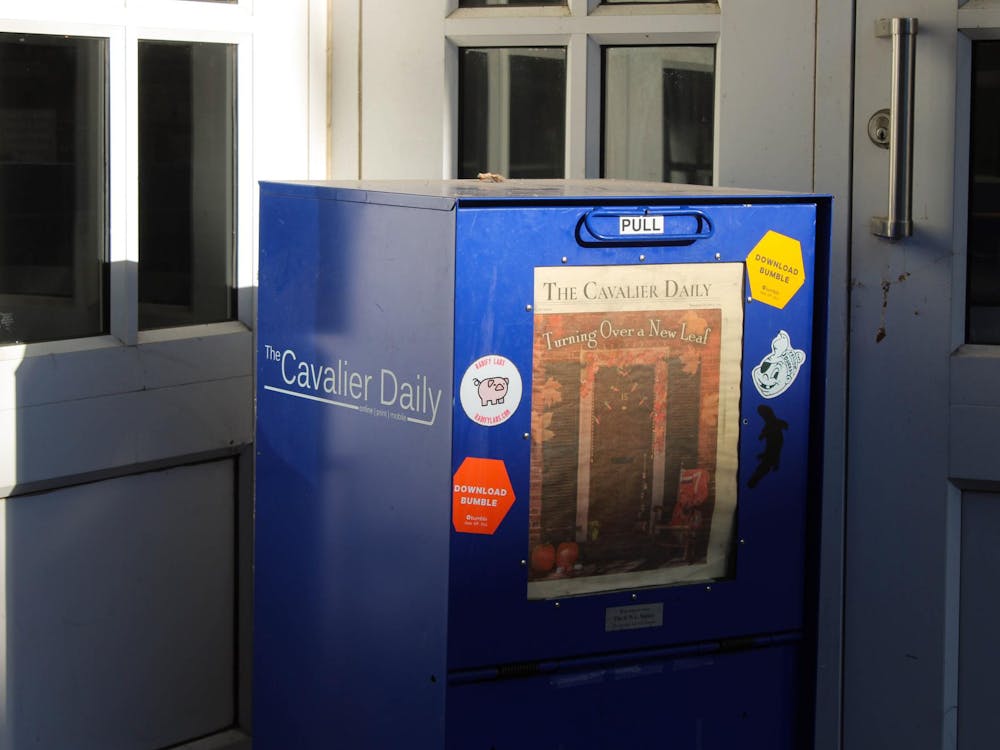During the past two decades, state funding for the University has dropped from 20 percent to 6 percent. The University has dealt with this in large part by soliciting gifts from private donors and establishing profitable relationships in the business world. Today, 9.3 percent of its budget comes directly from individuals and 13.6 percent from grants and contracts.
Often this money funds a donor's specific architectural or intellectual project, such as a foundation, a professorship or a building. "We once referred to private giving as the icing on the cake," University spokesperson Carol Wood said. "Now private giving is not only the icing, but a good bit of the cake as well."
\nThe fundraising administration\nFormer President John T. Casteen, III is often credited with vastly extending the University's donor network and making private funding a vital contributor to its budget. He has been referred to as the "fundraiser-in-chief," and in 1999, The New York Times ran an article called "Making the Ask" about his success, unparalleled in higher education, with soliciting donations. His work not only strengthened the University's operating budget but also allowed for its physical expansion; there were nearly 100 building projects during his presidency. Although Casteen is no longer president, the administration has continued to uphold connections with past donors, whose contributions the University now depends on.
Bob Sweeney, senior vice president for development and public affairs, has long been intimately involved in the University's fundraising efforts. He was promoted to his current position midway through Casteen's 20-year tenure after helping collect $4.3 billion. Now, much of his work in public relations is focused on asking for contributions to feed an endowment controlled by the University's Investment Management Company, which then uses most of that money to fund designated programs such as professorships, athletic programs and particular scholarships.
"None of our endowment comes from public sources," Sweeney said.
But before UVIMCO can profitably invest donations, the University administration has to convince potential donors that education - and specifically public education at the University - will benefit most from their money. This is not always easy. People who can do it, such as Casteen and Sweeney, are prized assets at a public institution that cannot always rely on state funding.
This is evident in the fact that "making the ask" isn't always simply a matter of asking. Sweeney explained the delicacy of donor solicitation: "We try not to be transactional - you give us this, and we'll do that. We're trying to build a relationship that will be a lifelong relationship that grows in interest [and] involvement."
Often these relationships are personal as well as financial. Charles Fitzgerald, senior associate vice president for principal relationship development, explained that large-scale givers frequently have connections with deans, the administration, development staff or peer alumni. Interactions with the University occur on this level because donors have particular values or personal interests that they think the University could promote.
"What I've come to believe is that to the donor, it's not about the money," Sweeney said. "It never was about the money. It's about the place, the promise for the future, the project, their ability to see a dream come true."
Still, the University's $3 billion fundraising campaign is one of the six largest ever launched by an institution of higher education. Sweeney said he thought the University should be measured next to private institutions such as Harvard and Stanford Universities. "For this reason," he added, "our need [for funds] is always much greater than our capacity."
The givers\nThe University put $43.8 million into the new South Lawn project while $61.2 million came directly from donors John Nau and David Gibson.
Sweeney's assertion that donors are often motivated by their hopes for the University and its future rang true for Gibson. "We must follow private donors and other people who know and love the University best toward the highest levels of accomplishment," Gibson said.
Explaining his hopes for the University's future, Gibson talked about his past.
He connected the capitalist freedom, which was so central to his success, to intellectual freedom at the University.
"The founding fathers gave us this republic and this freedom. Now it's our job to see that it lasts," he said. "Jefferson gave us this University, this freedom of inquiry, and it's our job to see that that lasts, too."
This, Gibson said, is a big part of why he helped fund the South Lawn; the building's architecture itself has a sense of openness and freedom.
Unlike some concerned administrators, Gibson said he saw the decrease in state funding for the University as an opportunity. "The state is an impediment to reaching our highest potential," he said, expressing his hope for what he saw as the ideal situation - a school completely independent of state money and control. If this were possible, he echoed Sweeney, "we'd be even greater than Harvard."
Greater autonomy from the state may allow the University to offer more opportunities to individual students, Nau said. He noted that his degree from the University played a significant role in how companies viewed his r






